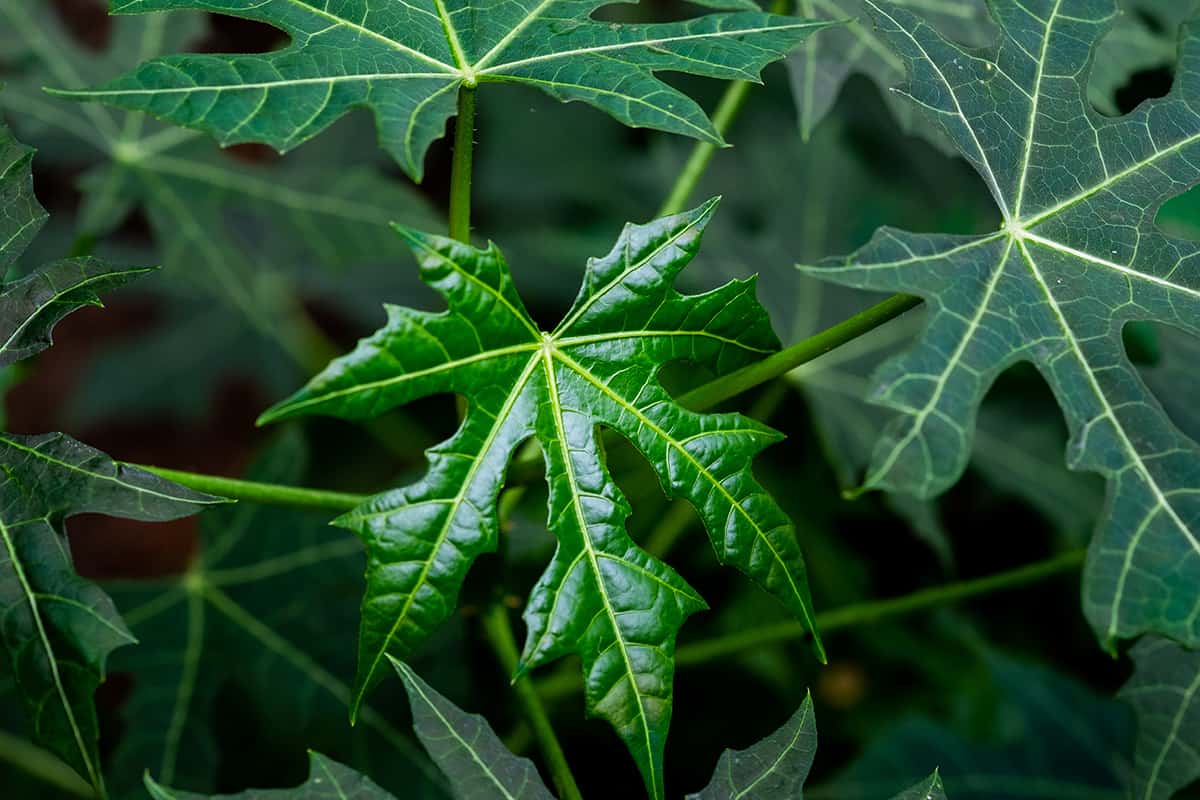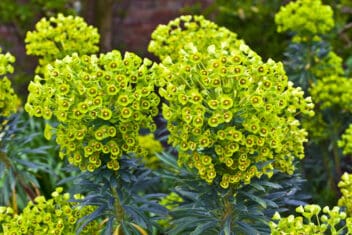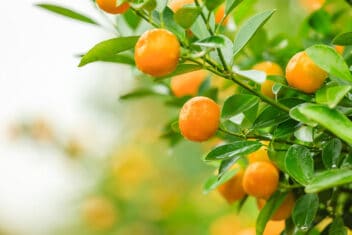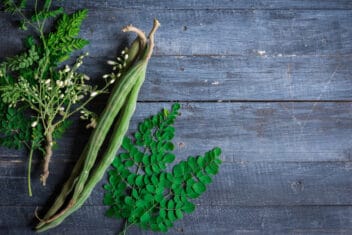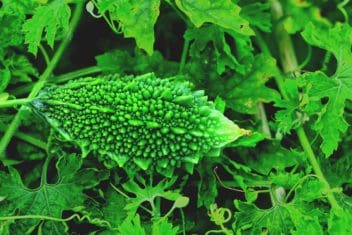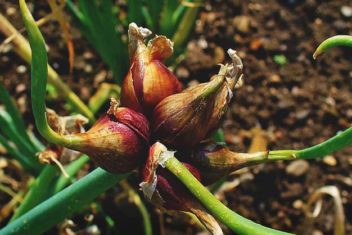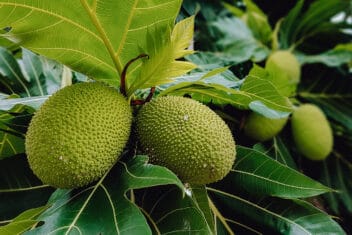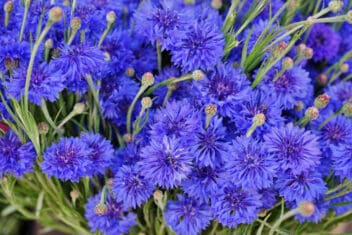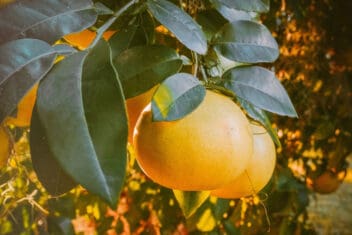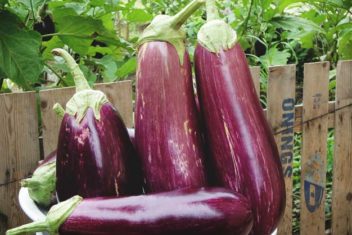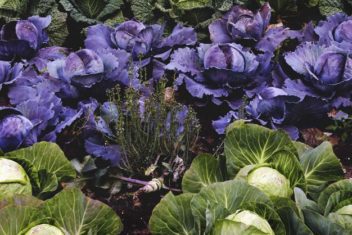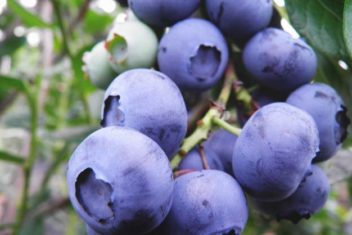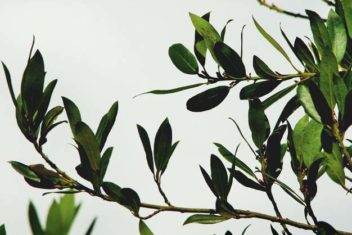When I look for a new plant to grow, I consider its food production value. I want long-lasting perennials that fit into a food forest environment. Tree spinach, or chaya, is just that.
It provides you with nutritious green leaves for years. Plus, due to its natural position as an understory plant, it’s perfect for food forests as a shrub to put under trees.
With high levels of vitamins and minerals, tree spinach is ideal for survival gardens because it’s loaded with calcium, phosphorus, and fiber.
What is Chaya?
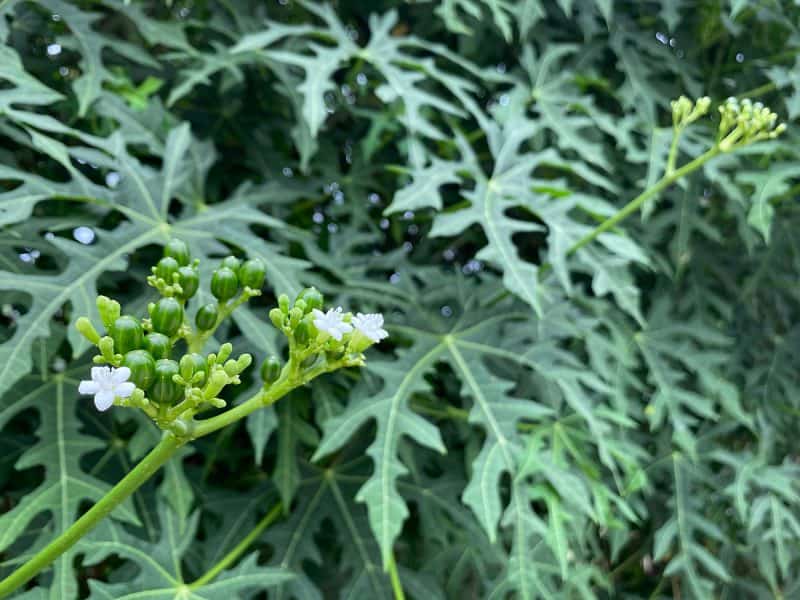
Cnidoscolus aconitifolius is known by various names, including tree spinach, chaya, kikilchay, chaykeken, and chay col. It’s a fast-growing and leafy perennial shrub used in many South American dishes and cuisines.
Chaya is native to Central America, but you can find it naturalized or cultivated in Africa, the Caribbean, Southeast Asia, the Galapagos, and South America. You can also find it in the United States in some southern states such as Florida, as well as in Hawaii and Puerto Rico.
Many cultures have used chaya for hundreds of years and consider it a health booster, particularly for lowering blood glucose levels. It has also been used to treat numerous other conditions, including acne, eye problems, kidney stones, and hemorrhoids.
The best thing about chaya is it’s a leafy perennial that provides produce year-round and is quite a simple plant to grow. The leaves are about three times the size of your usual leafy green, if not more, so you get a lot from just one plant.
Varieties of Chaya
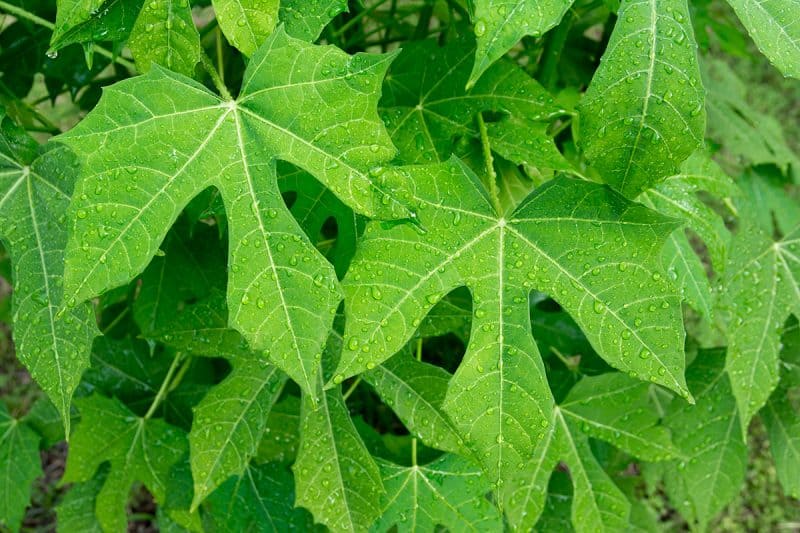
There are four cultivated types of chaya that look different from each other. All produce white flowers in the summer, and all can be used in the same way.
There are also some native morphotypes and species that have spikes and prickles. They’re normally wild, uncultivated varieties. All varieties may or may not have fine hairs on the stems, leaves, and flowers.
Chayamansa or Maple Leaf (Cnidoscolus chayamansa)
The leaves are broad and flat, with a shape like a very large maple leaf.
Estrella or Star (Cnidoscolus aconitofolius)
The leaves are star-shaped and almost look like a large dinosaur footprint with five points. I’ve found this is the most drought tolerant between this and Chayamansa.
Picuda (Cnidoscolus aconitofolius ‘Picuda’)
This type has deeply-lobed leaves with five to nine toothed lobes. This cultivar produces seeds, whereas the other three here don’t.
Redonda (Cnidoscolus aconitofolius ‘Redonda’)
Redonda has three deeply divided lobes either without teeth or with very small teeth.
How to Plant Chaya
Chaya needs a warm environment and grows best in USDA Growing Zones 8 to 11. You could try outside of these, as it’s certainly not fussy, but you might want to plant in a container and bring it indoors during the winter or hottest months of summer.
Chaya doesn’t tolerate heavy or sustained frosts. The average temperature should be between 68°F to 90°F. It has been known to survive in wider temperatures, down to 54° and up to 100°.
Plant in soil that is loaded with well-rotted organic matter. Think about the natural environment where chaya grows. It often sits under larger trees that drop leaves to the floor, where they rot away.
Aim for a soil pH of 5.5 to 6.5, though chaya plants will tolerate soil outside of this range, but with slightly less vigorous growth.
Once mature, the trunk will be about four inches in diameter, but that doesn’t mean the plant will stand on its own when it’s young. It might require staking in the first year, especially in windy areas.
Planting Seed
It’s rare for chaya flowers to produce seeds, and even when it does happen, they’re usually not viable, or they will produce plants will little vigor.
The flowers have a strong citrus scent and are loved by pollinators. Your chaya plant will be a bee magnet, which can only be good for your other plants as well.
Planting Cuttings
Stem cuttings are the most common way to cultivate chaya. It’s simple and usually successful. Stick to these basic steps and you can’t go wrong.
- Take a 12-inch cutting from a woody part of an existing stem.
- Ensure you have about four nodes minimum.
- Remove all the leaves except the top two.
- Lay in a warm dry area for two or three days to air dry so the ends become sealed. In some areas, this may take up to a week.
- Plant directly in the ground or into pots with a good quality planting medium.
- Ensure that you plant the stem at least two nodes deep. Three to four inches in depth is usually sufficient. Tamp the soil or medium firmly.
- Water well to keep the soil moist, but don’t overwater.
- If planting after starting in pots, make sure you trim the roots so they grow downwards and not out. Make the hole big enough so the roots face down as well without too much crowding.
Space your plants about 8 to 10 feet apart. Rows should be the same.
Young chaya plants aren’t cold tolerant, so ensure you plant in spring when all chances of frost have disappeared. An unexpected heavy frost will likely kill young chaya.
Established chaya have been known to regrow from the roots after a freeze.
Caring for Chaya
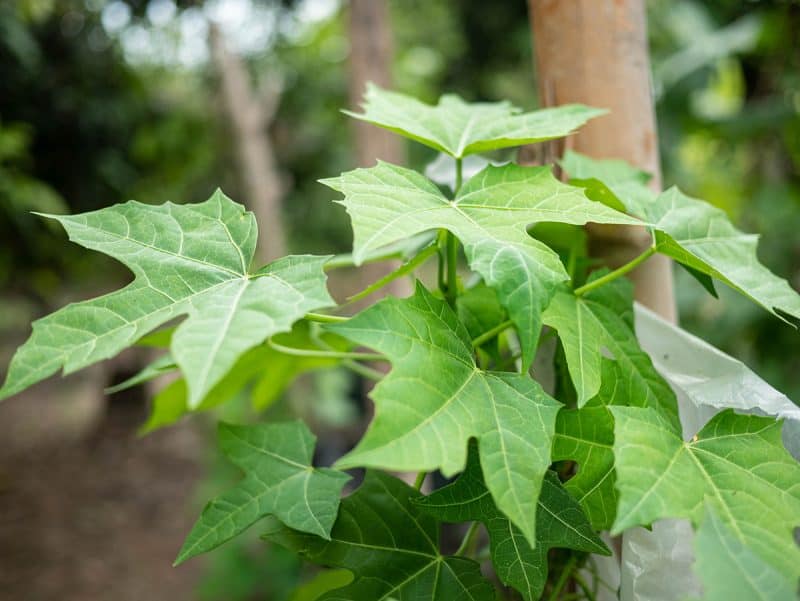
Given its propensity to spread in its natural habitat, chaya is an easy plant to maintain if you plant it in the right environment. There are a few tips we can share to make it grow even better.
Fertilizer
Make sure your soil has an abundance of well-rotted organic matter dug in when you first plant chaya. After that, use a good quality, preferably organic fertilizer once a year in mid to late spring.
Water
Once chaya is established it is often drought resistant, but will produce better quality leaves if watered regularly, but not too much.
Chaya grows in areas that get an annual rainfall of up to 70 inches, so keep the soil moist at all times if you can.
Pruning
I definitely recommend pruning your chaya plant. Left to its own devices, it will grow up to 20 feet high.
Prune your chaya to maintain a height of around 6 feet. This is to keep it as an understory plant and for ease of harvesting the leaves.
If the plant gets too high, the branches are prone to breaking in the wind.
Mulch
Use mulch in summer to retain moisture. This isn’t always necessary with chaya, but in very dry places it can only help. Tamp the mulch down a little to help with moisture retention.
Companion Planting for Growing Chaya
Plant chaya under any fruit tree in a food forest environment. Also consider planting it with:
- Blackberries
- Perpetual Spinach
- Chilies
- Rhubarb
- Tamarillo
- Lemons
- Guava
Common Problems and Solutions for Growing Chaya
Chaya is known to be a pest and disease-resistant plant. Having said that, I have had a couple of issues that I needed to address.
Tomato Hornworm
Tomato hornworm can cause extensive damage to plants, especially if their numbers grow too large.
Read our in-depth article on how to identify and prevent this pest.
Cassava Common Mosaic Virus
Chaya is very similar to cassava plant and shares this virus with many other plants in your garden.
Leaves turn yellow or speckled, and the plant is usually stunted and unhealthy. This is not something you want in a plant where you eat the leaves.
The virus is spread by aphids, so practice good pest management in your garden with neem oil or soap and water mixtures. I’ve found aphids come to the chaya plant after establishing themselves on other nearby plants, so keep an eye out for them in the rest of your garden.
Soil Deficiencies
I’ve included this here because although chaya is not a fussy plant, there are a couple of soil issues that will affect its health.
If your chaya plant is very slow growing, it is possibly a lack of nitrogen. The other issue this causes is the yellowing of leaves or overall stunted growth.
Insufficient calcium and potassium won’t be noticeable but will affect the nutrition of the leaves at harvest. If you ensure there is well-rotted organic matter in the garden at planting and yearly fertilizing with organic fertilizer, you should be okay.
Harvesting and Using Chaya
Although I’m confident you’ll love your chaya leaves and wonder why you hadn’t planted them before, there are some precautions you should take.
Make sure you wear gloves as chaya can have a milky, latex in the stems. They often have fine hairs which can aggravate some people’s skin.
The leaves of chaya contain a toxin that needs to be cooked out. They contain cyanogenic glycosides which, when damaged at harvest, can break down to form hydrogen cyanide. Don’t let this put you off as it’s easy to neutralize.
Cooking breaks all of this down. The suggested boiling time is 15 to 20 minutes. After this, you can use it in your dishes or cook it further in butter or oil. You can also blend the leaves in a blender or dry them to get rid of the cyanide.
Don’t cook in aluminum or you will create a poisonous chemical reaction. Don’t inhale the vapor from the boiling leaves.
When I harvest chaya, I start with the bottom leaves that are young and tender and work upwards.
To give it a fighting chance, don’t remove any more than two-thirds of the leaves, or regrowth is slowed right down. Store leaves in the fridge for up to a week.
The Bottom Line on Chaya
Chaya is one plant I wish I had heard about earlier because it is a perennial that keeps on giving. You’ll need up to five plants to get two family-sized servings per week because you need to give it time to recover, although picking the leaves stimulates further growth.
If you can wait, start harvesting in the second year for a much stronger plant.
